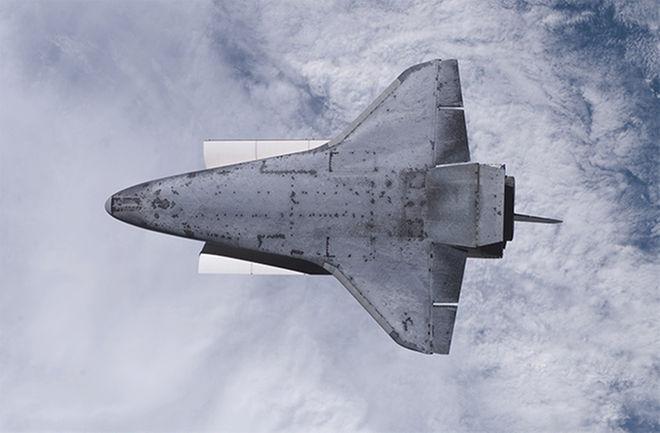 When I was a kid, I would visit my great-grandmother’s apartment on Park Avenue in New York City. She had traveled the world and brought back vases, plates, and dolls from more places than I could name. While I was fascinated with these objects, I was also terrified of them because I knew they were breakable, their fragility exaggerated in my mind to the point where it made me nervous just to look at them directly. And now, NASA is telling us that they are using 3D printed ceramics to make spaceships.
When I was a kid, I would visit my great-grandmother’s apartment on Park Avenue in New York City. She had traveled the world and brought back vases, plates, and dolls from more places than I could name. While I was fascinated with these objects, I was also terrified of them because I knew they were breakable, their fragility exaggerated in my mind to the point where it made me nervous just to look at them directly. And now, NASA is telling us that they are using 3D printed ceramics to make spaceships.
But these are not your grandmother’s ceramics.
It turns out that ceramics are actually incredibly strong, lightweight, and heat resistant, making them ideal materials for creating components of air- or spacecraft. Unfortunately, it has been difficult to unlock that potential through 3D printing because ceramic particles are not fused together when subjected to heat – the very property that makes them so desirable was working against their utilization.
 But the question of how to utilize these materials in combination with 3D printing processes was not to be left unanswered. Rising to the challenge were HRL’s Zak Eckel, Senior Chemical Engineer, and Dr. Chaoyin Zhou, senior chemist. HRL’s senior scientist, D. Tobias Schaedler discussed the results:
But the question of how to utilize these materials in combination with 3D printing processes was not to be left unanswered. Rising to the challenge were HRL’s Zak Eckel, Senior Chemical Engineer, and Dr. Chaoyin Zhou, senior chemist. HRL’s senior scientist, D. Tobias Schaedler discussed the results:
“Our team surmounted the challenges inherent in ceramics to develop an innovative material that has myriad applications in a variety of industries. The resulting material can withstand ultrahigh temperatures in excess of 1700°C and exhibits strength ten times higher than similar materials. Everything from large components in jet engines and hypersonic vehicles to intricate parts in microelectromechanical systems and electronic device packaging could be fabricated.”
So what did the scientists do to create this printable ceramics formula? The entire explanation is included in the journal Science (vol. 351 no. 6268 pp. 58-62). However, in case you’d rather get right to the point, never fear, we here at 3DPrint.com have read it for you.
 Given the desirable qualities of ceramics, the primary drawback of not being able to 3D print them is that they can not be cast or machined with ease and so there have been significant limitations to their geometric possibilities. In order to unlock this geometric flexibility, the researchers developed a material that prints like a plastic but, when etched with UV light that fuses the monomers (small clumps of molecules) into polymers (long chains of molecules). When surrounded by argon gas and heated to 1,000°C (a process known as pyrolyzing), the material forms a tough ceramic. In the researchers’ own words in Science:
Given the desirable qualities of ceramics, the primary drawback of not being able to 3D print them is that they can not be cast or machined with ease and so there have been significant limitations to their geometric possibilities. In order to unlock this geometric flexibility, the researchers developed a material that prints like a plastic but, when etched with UV light that fuses the monomers (small clumps of molecules) into polymers (long chains of molecules). When surrounded by argon gas and heated to 1,000°C (a process known as pyrolyzing), the material forms a tough ceramic. In the researchers’ own words in Science:
“We report preceramic monomers that are cured with ultraviolet light in stereolithography 3D printer or through a patterned mask, forming 3D polymer structures that can have complex shape and cellular architecture. These polymer structures can be pyrolyzed to a ceramic with uniform shrinkage and virtually no porosity. Silicon oxycarbine microlattice and honeycomb cellular materials fabricated with this approach exhibit higher strength than ceramic foams of similar density. Additive manufacturing of such materials is of interest for propulsion components, thermal protection systems, porous burners, microelectromechanical systems, and electronic device packaging.”
These ceramic parts offer superior performance to those produced by other methods as well as unlocking the potential for future improvements and represent the first time that silicon carbine ceramics have ever been 3D printed.
And I can’t help thinking that my great-grandmother would be impressed. What do you think of this process? Discuss in the 3D Printed Ceramics forum over at 3DPB.com.
[Source: Albany Daily StarSubscribe to Our Email Newsletter
Stay up-to-date on all the latest news from the 3D printing industry and receive information and offers from third party vendors.
You May Also Like
3D Printing News Briefs, April 13, 2024: Robotics, Orthotics, & Hypersonics
In 3D Printing News Briefs today, we’re focusing first on robotics, as Carnegie Mellon University’s new Robotics Innovation Center will house several community outreach programs, and Ugogo3D is now working...
Rail Giant Alstom Saves $15M with 3D Printing Automation Software 3D Spark
3D Spark has entered into a three-year deal with the rail giant Alstom. Alstom, a transport behemoth with annual revenues of $16 billion, specializes in the manufacture of trains, trams,...
Meltio Expands Global Reach with New Partnerships in the Americas and Europe
Spanish 3D printing manufacturer Meltio has expanded its sales network across the globe. With the addition of three new partners in the United States, Brazil, Argentina, and Italy, Meltio aims...
3D Printing Webinar and Event Roundup: April 7, 2024
Webinars and events in the 3D printing industry are picking back up this week! Sea-Air-Space is coming to Maryland, and SAE International is sponsoring a 3D Systems webinar about 3D...































